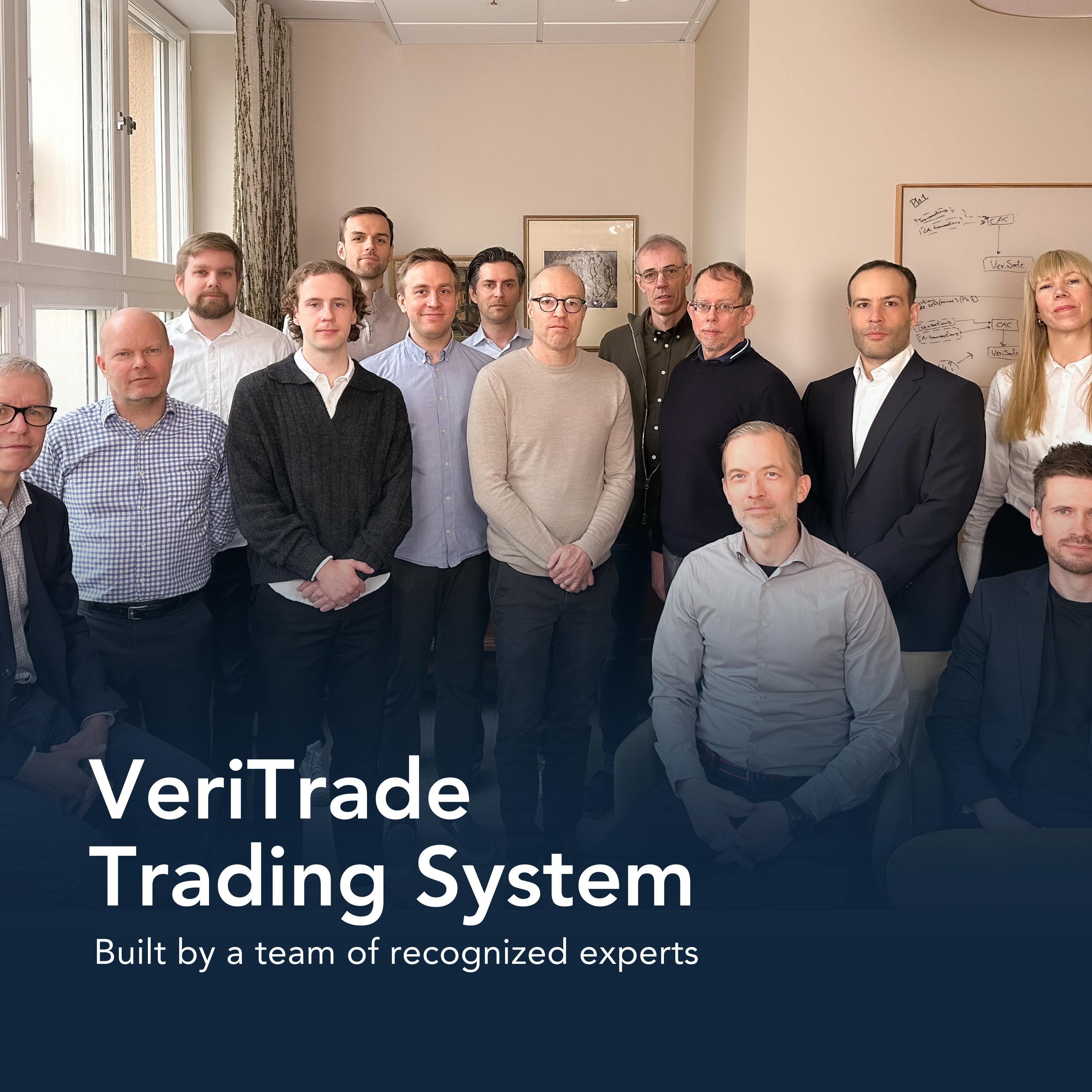
November 2025
Trust in Transition: The Role of Boards in Financial Market Transformations
Guest article by Roger T. Storm.

Roger T. Storm
Boards’ and executives’ decision making readiness and risk appetite are now truly tested. With major shifts underway in geopolitics, technology, and markets, it is tempting to remain in analysis modus and to minimize risk. Delaying may however be the more dangerous path. Boards of exchanges, clearers, depositories, banks, insurers, and asset managers – all part of the financial markets - have a fiduciary duty to continue to drive value creation and help assure financial stability just like any other enterprise. But given the fundamental trust that these entities depend upon, change here is particularly sensitive. An IT platform upgrading for example, will commonly also involve changes of competencies, market conventions, standards, and liability shifts. Supervisory authorities will be watching closely, and the pressure on making the right choices are very high. Changes affect many stakeholders as finance is so widely interconnected. But postponements can increase the step-height of subsequent moves, open for competitors, and erode credibility as a future provider. To help organizations move forward, and focus on execution, a robust transition framework is helpful. Maintaining agility within a structured approach ensures progress and will nurture trust.
The world is going through major shifts: deglobalization, rapid technology advancements, and serious security concerns are all combining and reshaping the world economically and practically. The promise and threat of artificial intelligence and agentization, has set off a flood of new investments. Navigating these turbulent waters requires long-term value creation focus, measured risk taking, and deep understanding of enterprises’ value creation. This is all the more an issue for financial companies which serve economies at large. Not only must they follow the shifting tides of money pools, but they must often also upgrade their own aging technology stacks. In several cases their business models are built around old frictions and market inefficiencies, which can now be more readily bridged with technology. This raises the stakes in any undertaken change. Financial market infrastructures (FMIs), such as exchanges, central clearers, depositories, and the involved banks, rating agencies, overseers, and the long range of suppliers, have to balance trust in stability with a trustworthy upgrading momentum. Because of their systemically important nature and interconnectedness, major changes here require great care. Those in charge carry heavy responsibilities, not least as caretakers of the crucial trust in their organizations and the eco systems of which they are a part. It is tempting to remain in analysis mode, rather than to take decisions and action. This can, however, be the more dangerous path to take, leading to erosion of stakeholders’ confidence and users shifting to other providers and markets.
So, how can such societally important actors, change whilst maintaining, or even better increase general trust in what they do? What should board directors and executives consider? The regionalization of trading, spreading of new asset classes, shifts towards platform and data business models, use of tokenization, 24/7 trading, and the promise of artificial intelligence must all be factored into the decision making. With so many parameters shifting, and so much fog over many parts of the terrain, a good framework and incremental moves, coupled with dialogue can ensure development and nurture trust and relations.
1. A clearly articulated and well anchored vision of the current and future value proposition is a required foundation for any undertaking. An honest and calibrated assessment of the served markets’ needs and wants, as well as the organizations capabilities and resources, is another corner stone. A look both from the inside out and outside in is essential here. It is helpful with a series of scenario explorations at this stage, of shifting external and internal parameters, which should be followed by the difficult step of deciding priorities. What needs to be enriched, fixed, or disbanded? A balanced assessment of the probabilities of the main scenarios and desired playbooks, with external support can speed up this phase. Defining smart objectives and key results (OKRs) for the medium-term planning horizon, another basic piece, then follows.
2. Maintaining a regular close dialogue with the many stakeholders’ is critical throughout any change. Affected parties want to be heard and their current and future needs captured. Given the width and different levels with which FMIs interact (e.g. those seeking finance, the investors, the asset managers, the banks, the regulators, and suppliers, as well as management, operational and IT staff of these organizations) it requires dedication. But it is also a safety valve, in terms of quality control of the direction of travel and the deliveries, and a chance to tether clients and others to the intended change (ahead and during change of interfaces, rulebooks, and any related testing). In case of license changes or supervisory approvals, all these can dramatically affect delivery time-lines and should be included in the scheduling.
3. When thereafter actioning the plan, the classic project and program scaffolding are required (be they waterfall or an iterative agile approach). Well formulated objectives and results/deliverables, clear governance, resourcing, budgeting, reporting, gate-keeping, and strong change-controls are naturally required. Starting with the basics and expanding in steps, is often more effective than preplanning the totality of a solution. Given the complexity of finance, this is often hard enough. The chosen suppliers and partners must be screened, for offering, quality, mindset, risk aspects, and terms and conditions. Provider/partner negotiations will usually follow, and the more comprehensive the relation the more time this is likely to take. It is tempting to remain too long in this phase, in the hope of minimizing risks. Key decisions such as operating model and what to buy and what to build will have to be taken. These may have been looked at in the first phase, but in all likelihood, they will resurface as ‘the rubber hits the road’. Weak teams, delays in important decisions, vague governance structures are important potential pitfalls at this stage. Clear delegated decision-making principles, support for assumed accountability, and flexibility are hallmarks of successful implementations.
4. During the transition, stakeholder communication remains important. Those in charge of the changes should be given delegated responsibility to execute in accordance with the agreed plan and backup in terms of dealing with the commonplace pockets of resistance (around which there must also be candid dialogue). Progress adjustments, and strategic alignment, are thereafter best done through dedicated formal checkpoints along the route. Here the incremental deliveries and discoveries can be assessed and adjustments made – based on feedback, learnings, proof-of-concepts, additions, experiences, from multiple angles, such as financials, operations, legal, risk and compliance. The decision-making capacity and defence of the possibly difficult changes (for example those affecting clients, staff, terms & conditions, service quality, and market practices) can make or break initiatives in this stage. Continuous calibrated risk management is essential for successful transitions. It may be tempting to spend a significant amount of time on risk analysis in the early stages, to enrich the initial decision making. But if the ensuing monitoring is weak the early analysis may well prove incomplete. By shifting the attention to key gate-passage points and then taking in second opinions and perspectives on the risks, can be much more effective.
5. Deployments are critical moments, which should be carefully scheduled and done after sufficient testing (not seldom 60/40% ratios of testing versus development time), roll-back plans and formal approvals are in place. After this key check- and action-point, the post-implementation follow-up usually follow in most project/agile frameworks. These are critically important nourishment for the next cycle of strategy and action planning. This applies to whole transitions, but also to the many incidents and events during changes. It is a chance to celebrate with the involved stakeholders and to learn collectively. With the many descoping changes and what not along the route, and the following potential negative impact on some constituents, it is the moment to positively address those. Some of the legacy systems are extremely stable and the initial anomalies have been ironed out with time. It is to be expected that new solutions, will look and feel different and most probably will come with some flaws that requires reworking. New solutions will need in turn to be future-proofed, with documentation, and a fresh development and maintenance plan. As products and services mature, and margins erode, providers may also wish to diminish certain quality aspects. Carefully listening to the users at this stage can provide input to where there is particular value and if they can be priced. Each ending is a new start, so to speak.
Security and resiliency (bounce-back capability) have risen to become one of many entities top five priorities. It applies to the choice of providers, outsourcings, implemented code, staffing, and insights into key meta-data such as IT architecture and any control weaknesses. The increased digitalization coupled with the increased geopolitical risks, inevitably now requires stricter and formal control over data classification and sharing. Therefore, any financial change initiative will have to carry an ‘over coat’ of securing elements and staff. The need for frank and frequent stakeholder dialogue, compounds the work needed around this.
Change is inevitable and even required for progress. Traditional FMIs and banks may seem slow but there are also good reasons why this is the case. All the same, the pace of transition is relentless and those not moving may find themselves left behind. If financial market firms remain in wait-and-see mode it impacts not just them but also the economies, they serve. To maintain community trust, boards and executives should continue to take positive action, nurturing the earned confidence, by proceeding with well thought through and transparent change approaches.
Roger T. Storm
Advisor | Non-Executive Board Director | Interim Executive | Author
StormExec AB // www.stormexec.com
Roger is a seasoned board director and executive with over 35 years in corporate banking and financial market infrastructures. He has served as CEO of Sweden’s central securities depository, as deputy head and CRO of European clearing houses (assurers) in Switzerland and France, over a period of 15 years. Before this he held senior positions at the Swedish Bank, SEB, such as managing director for SEB in France, responsible for select bank M&As and strategic projects, as well as global head of transaction banking services. Having held a range of board directorships, in chambers of commerce, banking and financial market industry associations, as well as telecommunications, he is well versed in governance of regulated systemically important financial entities, audit, risk, and remuneration committee. He holds an MBA, CFA and excellent academic records and is a Swedish national.








